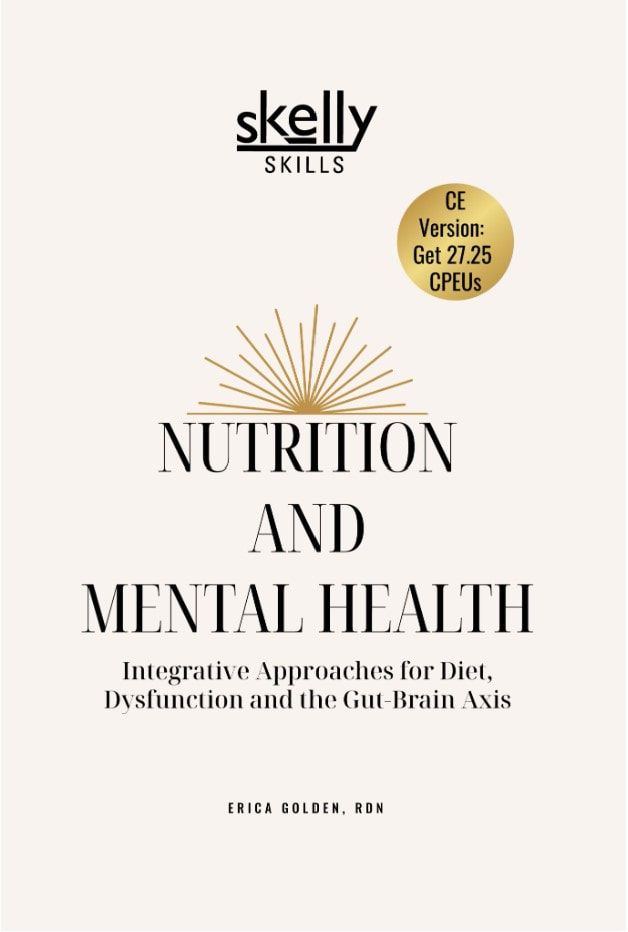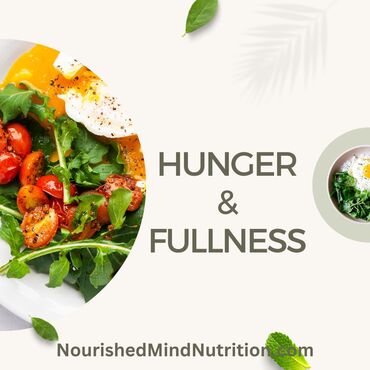0 Comments
One of the goals of mindful eating is developing an increased awareness of sensations within the body, including knowing when one is “hungry” and when one is “full.” But while this may sound simple, hunger and fullness can actually be a lot more challenging to identify.
That’s partly because hunger is not binary. Meaning, it’s not just either-or: either hungry, or full. Hunger and fullness exist on a continuum. Often, figuring out where exactly we are on that continuum takes more attention than we tend to pay to anything going on internally. In the process of learning to tell when to start and when to stop eating, it can be helpful to put numbers on that continuum. While the sensations of hunger and fullness aren’t the same for every person, here’s an example of what that might look like on a one-to-ten scale: 1 – Starving! I have severe hunger pangs and feel shaky and weak. I am obsessing over food. 2 – Ravenous. I am really hungry, but it’s not yet intolerable. I am thinking about food constantly. 3 – Hungry. I have slight hunger pains, but it’s not uncomfortable. I know what I could eat and feel satisfied. 4 – Mild hunger. My stomach is growling, I know I will want to eat soon. 5 – Neutral. Not hungry, not full. 6 – Mild fullness. I am filling up, but I could eat a bit more to feel totally satisfied. I feel energized by what I have eaten. 7 – Full. I am totally satisfied and feel no hunger. My energy level has been topped off and I feel like I won’t be hungry for hours. 8 – Slightly overfull. I should have stopped eating a few bites ago. Stomach feels a bit swollen. 9 – Overfull. I am overfull and bloated, uncomfortable and sleepy. 10 – Stuffed. I am full to the point of feeling stuffed. Extremely uncomfortable. I have eaten much more than what was good for my body. I have no energy. I feel like I could be physically ill to relieve the discomfort. (source: whatsforeats.com.au) On the scale above, you would probably want to keep yourself between a 3 and a 7 most of the time. While there are always going to be exceptions in either direction—it’s a totally normal part of normal eating to sometimes be a bit too hungry and sometimes be a bit too full—our body and mind tend to work best within that comfortable zone between the extremes. Getting below a 2 or 3 on the hunger scale can make it difficult to focus on other tasks and can lead to overeating when you do eat. It may make it difficult for some people to get enough energy and nutrients over the course of a day. It may also lead to slower thinking and decision-making and cause you to not move your body as much. The bottom line: there is a reason why our bodies tell us that we are hungry, and it’s important to our health that we listen. Routinely eating past a 7 or 8 is uncomfortable and, for some people, can lead to stomach and digestive problems (such as acid reflux or diarrhea). The feeling of fullness often does increase slightly over a few minutes after you’ve finished eating, which is why slowing down the process of eating can be helpful if you tend to be a quick eater. The bottom line: if you’re routinely eating past fullness, stop and ask yourself why. Is there another reason besides hunger that you’re eating? (This is not necessarily a bad thing, but helpful to be aware of.) Are you eating too fast? Do you set your fork down, chew thoroughly and taste your food, take sips of water, and take the time to smile? Are you always in a rush, eating on the go, or anxious about the food you’re eating or the environment in which you’re eating? Try stopping yourself routinely throughout a meal to think, how hungry am I? If I stopped now, would I have the energy I needed to be active and stay focused for the next few hours? If I took a few more bites, would I feel better, or worse? As a mindfulness practice, you may want to try to figure out your just-noticeable-difference—the number of bites it takes to make a discernible difference in your level of hunger/fullness. Above all, don’t let mindful eating become stressful or make your mealtime less enjoyable. Use it to help you get the most out of your meals and snacks, enjoying them to the fullest and ensuring that they give you energy to live your life and feel well. Note: Mindful eating can be very helpful for some, but not for all. There are several groups of people for whom I tend to avoid recommending mindful eating, at least early on in our work together. For example, if you are dealing with disordered eating that leads you to feel very anxious about food, you may need to start with a more structured approach towards eating rather than with mindfulness in the initial stages of treatment. Additionally, some patients with functional bowel disorders may deal with an excessive focus on internal sensations (this is known as visceral hypersensitivity) and trying to increase focus on the sensations of hunger and fullness may not be appropriate initially. If you’re wondering whether practicing eating mindfully would be helpful for you, I encourage you to talk to a dietitian or counselor. If food is of particular concern, try starting out with practicing mindfulness in other areas of life first—mindful movement or mindful walking might be a lovely place to start. |
AuthorErica Golden, RDN Archives
March 2024
Categories |


 RSS Feed
RSS Feed
